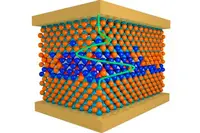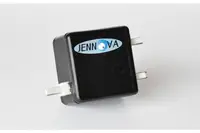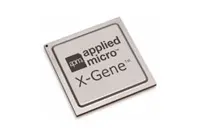Electronics News
Archive : 18 November 2015 год
 According to scientists from the University of Lancaster and spin out company Quantum Base, current authentication solutions, such as anti-counterfeit tags or password-protection, base their security on replication difficulty, or secrecy, which can be broken or forged. Looking to solve this problem, the team is using nanomaterials to create an unbreakable ID.
According to scientists from the University of Lancaster and spin out company Quantum Base, current authentication solutions, such as anti-counterfeit tags or password-protection, base their security on replication difficulty, or secrecy, which can be broken or forged. Looking to solve this problem, the team is using nanomaterials to create an unbreakable ID.
The approach – called Q-ID – is said to derive its security from the unique arrangement of atoms created during epitaxy, the process used to create semiconductors and semiconducting diodes.
Q-ID embeds a resonant tunnelling diode into a device. This comprises a layer of indium gallium arsenide sandwiched between two layers of aluminium arsenide. When a voltage sweep is performed, a spectrum – or fingerprint – is produced that is unique to that device.
Dr Robert Young, research fellow and lecturer at the University of Lancaster, said: “If you want to keep your smartphone secure, you can either use a long password or a fingerprint. The fingerprint is easier to use and more complex than a password.
“Simulating Q-ID ‘fingerprints’ requires vast computing power and is not achievable in a reasonable timescale, even with a quantum computer. When coupled with the fact that the underlying structure is unknown, unless dismantled atom-by-atom, this makes simulation extremely difficult.”
It is claimed the Q-ID approach can be integrated into existing chip manufacturing processes, enabling products to be tracked throughout the supply chain.
Dr Young said: “One could imagine our devices being used in industries with high counterfeiting rates to identify a range of products, from spare parts for electronic goods, such as iPhone batteries, to verifying the ingredients of individual pills in pharmaceuticals. With this technology, the parts can be verified as genuine so consumers don’t get fooled into buying fake goods that can be defective or even dangerous. The possibilities are endless.”
Lancaster and Quantum Base are talking to manufacturers in aerospace, consumer electrical, automotive and pharmaceuticals about integrating the device into their production processes.
Pic: When a voltage sweep is performed through this layer of indium gallium arsenide sandwiched between two layers of aluminium arsenide, a spectrum – or fingerprint – is produced that is unique to that device
Author
Tom Austin-Morgan
Source: www.newelectronics.co.uk
 Huawei has unveiled a range of quick charging lithium-ion batteries that have achieved a charging speed 10 times faster than that of normal batteries, reaching around 50% capacity in minutes.
Huawei has unveiled a range of quick charging lithium-ion batteries that have achieved a charging speed 10 times faster than that of normal batteries, reaching around 50% capacity in minutes.
Two demonstrations were shown at the 56th Battery Symposium in Japan showing two types of quick-charging li-ion batteries: one with a 600mAh capacity was shown to charge to 68% capacity in two minutes; and another with a 3000mAh capacity and an energy density above 620Wh/L, was shown to charge to 48% capacity in five minutes. These quick charging batteries are claimed to have undergone many rounds of testing, and have been certified by Huawei's terminal test department.
According to Huawei, the company bonded heteroatoms to the molecule of graphite in anode, which could be a catalyst for the capture and transmission of lithium through carbon bonds. Huawei stated that the heteroatoms increase the charging speed of batteries without decreasing energy density or battery life.
Huawei says that these quick charging batteries will lead to a revolution in electronic devices, especially mobile phones, electric vehicles, wearable devices, and mobile power supplies.
Author
Tom Austin-Morgan
Source: www.newelectronics.co.uk
 Jennova has introduced an Electrodynamic Energy Harvesting (EH) technology designed to simplify the capture and amplify the energy produced from the rotation or spin of devices and to power smart sensors and IoT applications.
Jennova has introduced an Electrodynamic Energy Harvesting (EH) technology designed to simplify the capture and amplify the energy produced from the rotation or spin of devices and to power smart sensors and IoT applications.
“Jennova has worked to create a technology that is virtually error-free and harvest the energy that is typically lost in mechanical motion,” said Terry Pennisi, CEO and founder of Jennova. “Our design can reach a wide range of outputs both in voltage and current to satisfy the energy needs of this market. Recent tests have shown the ability to power four wireless sensors for an indefinite amount of time with just one of our energy harvesting solutions.
Jennova’s Rotation Energy Harvester uses magnetic induction to gather energy from rotation or the motion of devices. Its circuit board can be paralleled and the number of magnets increased to raise power output. The device can also be integrated into new and existing infrastructures by attaching magnets to the rotational source and then affixing the energy harvesting board to the desired location. Once installed, no further maintenance or calibration is required.
Pennisi continued: “There is no defined limit to how long our technology can produce energy.As long as there is motion, it can create power.In addition, since it’s a simple design with no moving parts, wear and tear is not an issue.”
Jennova’s Electrodynamic EH technology is claimed to generate 16mW and as much as 64mW if several systems are linked together. This translates into more powerful transmitters distributing data more often.
“The unreliable consistency of power has always been a major concern for most energy harvesting systems,” said Christian Pennisi, the company’s director of operations. “Our Rotational Energy Harvesting technology eliminates this challenge by supplying a constant stream of power that produces higher sensor iteration rates, while also enhancing the accuracy of the sensor readings.”
In addition to its advances in energy harvesting, Jennova has developed a self-powered EH Multi-Sensor offering autonomous remote sensing capable of gathering multiple sensor inputs and sending the data package wirelessly to either the web or direct to device. It is said to be suited for hazardous or difficult to reach infrastructure and remote or mobile platforms. The unit is configured to read RPM, harmonic vibration, temperature and current information, and can be coupled with additional EH systems to provide added power or enhanced data transmission rates.
The company’s Industrial Tachometer is also designed as a permanent, self-powered solution for industrial RPM measurement. Once installed, the power required to gather and transmit data is self-generated with the RPM data sent as a standard TTL pulse.
Author
Tom Austin-Morgan
Source: www.newelectronics.co.uk
 AppliedMicro has announced third generation of X-Gene, its so called Server on a Chip. Called X-Gene 3, the device is targeted at TSMC’s 16nm FinFET process and will feature 32 ARM v8 cores operating at up to 3GHz, eight DDR4-2667 memory channels and 42 PCIe Gen 3 lanes. According to the company, the device is expected to be offer four to six times the performance of current X-Gene products.
AppliedMicro has announced third generation of X-Gene, its so called Server on a Chip. Called X-Gene 3, the device is targeted at TSMC’s 16nm FinFET process and will feature 32 ARM v8 cores operating at up to 3GHz, eight DDR4-2667 memory channels and 42 PCIe Gen 3 lanes. According to the company, the device is expected to be offer four to six times the performance of current X-Gene products.
“We are finally ready to take the lid off something we have been working on for the last two years in stealth mode,” said AppliedMicro’s president and CEO Dr Paramesh Gopi. “We are really excited because X-Gene 3 gives us the opportunity to inflect the entire ARM server market.”
AppliedMicro expects to sample X-Gene 3 in the second half of 2016.
Author
Graham Pitcher
Source: www.newelectronics.co.uk

